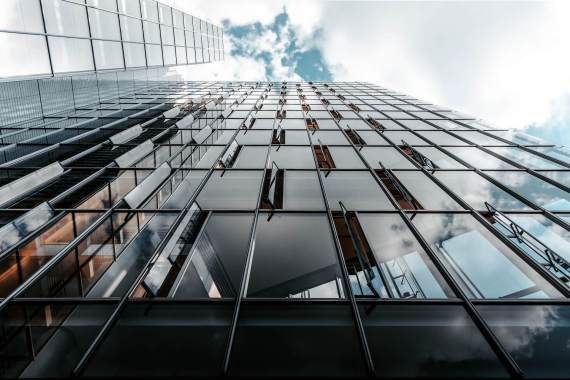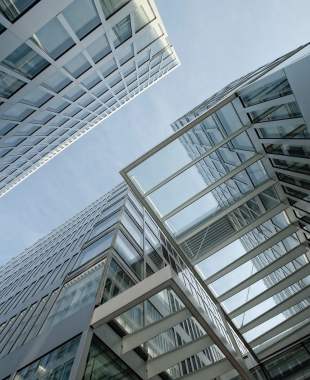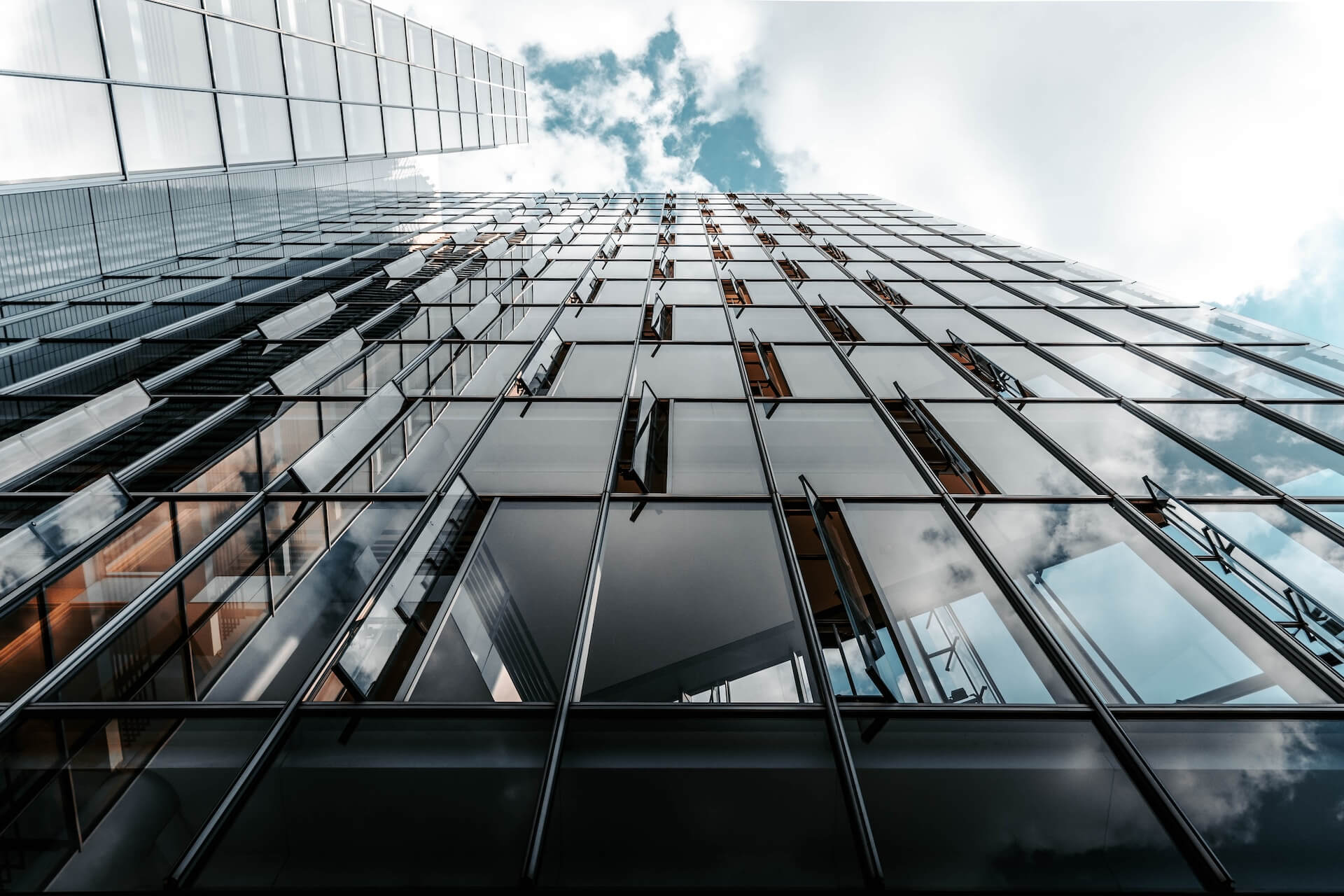🕑 Reading time: 1 minute
Cutting energy costs for commercial buildings can be a challenging task. From heating and cooling to lighting and appliances, energy consumption in commercial buildings is often quite high. But with the right strategies and technologies, you can reduce energy costs and maximize efficiency.
In this article, we’ll discuss the benefits of energy efficiency, some tips and tricks to help you get started, and how to implement an energy efficiency plan effectively. We’ll also cover the fundamentals around understanding energy efficiency, HVAC systems, water consumption, natural lighting, smart lighting solutions, occupancy sensors, and energy education and training for staff.
By the end, you’ll have a solid understanding of maximizing energy efficiency in your commercial building and reducing energy costs. So let’s get started!

Understanding Energy Efficiency
Energy efficiency has become a key part of building operations across all industries as businesses strive to become a part of the sustainability revolution. Its lowered energy consumption results in both cost savings and environmental benefits. Therefore, it is important to understand fully how energy efficiency works and the steps that can be taken to maximize it in commercial buildings.
At its most basic level, energy efficiency involves using less energy to do the same amount of work. This is achieved by improved technology, more efficient use of energy resources, and effective energy management practices. It is important to understand the role of all aspects of energy efficiency, including the physical building, the systems and controls that manage energy use, and the people who make decisions and form habits that affect energy consumption.
Physical Building: The physical building can be integral to every energy efficiency plan. This includes both the infrastructure of the building, such as walls and roofs, and the systems that use energy, such as lighting, heating and cooling systems, and appliances. Increasing the energy efficiency of the physical building can be achieved by improving insulation, installing more efficient lighting, selecting energy-efficient appliances, and considering other energy-efficient building materials.
Energy Management Systems & Controls: The next step in energy efficiency is using energy management systems and controls. These can monitor energy usage, adjust settings for energy-intensive systems, and perform automated actions that reduce energy consumption. Examples of energy management systems and controls include sensors, programmable thermostats, energy monitors, and energy management software.
People: The third component of energy efficiency is people. People are the ones who use the energy and make decisions that can impact energy consumption. It is important to make sure that everyone is educated and understands the importance of energy efficiency and that they are aware of the steps that can be taken to maximize it.
By understanding all three energy efficiency components, businesses can optimize their operations and contribute to a more sustainable future.
Benefits of energy efficiency
commercial buildings are numerous, offering great long-term financial savings for businesses. By implementing energy-efficient measures into a business setting, businesses can reduce their energy costs, conserve resources, and reduce their environmental footprint. Energy efficiency also increases building occupants’ comfort, improves indoor air quality, and greater resiliency in external disruptions like power outages. All of these benefits enhance an organization’s operations, lower the cost of doing business, and contribute to greater workplace satisfaction.

Energy Efficiency Tips and Tricks
Improving energy efficiency in commercial buildings is important in reducing environmental impact and controlling operational costs. Several practical steps can be taken to maximize energy efficiency and reduce energy waste.
One of the most powerful ways to improve energy efficiency is to keep equipment and systems in good working order. Promptly repair any minor issues and ensure that all equipment is properly maintained. This includes performing regular maintenance on HVAC systems, fixtures, and other equipment. Replacing or upgrading worn-out old equipment with more energy-efficient models can also significantly impact energy efficiency.
Weatherization and insulation are also important strategies for improving energy efficiency. Sealing up drafts and installing weather stripping or caulking around windows and doors can help to prevent heated or cooled air from escaping the building. Adding insulation in walls, attics, and other areas can help to regulate temperature and reduce energy loss.
Utilizing natural lighting and ventilation is another way to reduce energy use. Installing skylights or other windows to let in natural light can reduce the need for artificial lighting during the day. Open windows and doors to take advantage of natural ventilation and reduce the strain on your HVAC system.
When it comes to heating and cooling, proper use of thermostats can help to keep energy costs down. Installing programmable thermostats that automatically lower temperatures at night or when the building is unoccupied can reduce energy waste and save money. Investing in a smart thermostat can make adjusting settings and monitoring energy use even easier.
Finally, investing in energy-efficient lighting can greatly impact energy use. LEDs and other energy-efficient lightbulbs use significantly less energy than traditional bulbs and can last much longer. Installing occupancy sensors and dimmers can also reduce energy waste related to lighting.
Overall, taking steps to improve energy efficiency can positively impact the environment and your bottom line. Implementing these strategies can reduce energy use and keep costs under control.
Perform regular energy audits.
Regular energy audits are key to maximizing energy efficiency in commercial buildings. During an energy audit, a professional assessor will inspect the building materials, insulation, ventilation, lighting systems, and more and report on their optimal performance. The assessor will identify any potential areas of energy waste and provide recommendations on how to improve energy efficiency. Engineers and technicians can then take the necessary steps to make building upgrades. Regular energy audits should be conducted at least once a year to ensure energy efficiency, and the results should be kept on file for future reference. Additionally, workers should be trained to recognize areas prone to energy inefficiency and report these areas to management. By following these best practices, commercial buildings can maximize energy efficiency and reduce utility bills.
Install energy-efficient technologies
Installing energy-efficient technologies is one of the most effective ways to maximize energy efficiency in commercial buildings. Choosing the right technologies for your building setup is the key to achieving maximum efficiency. When selecting the best products for your building, consider their expected lifespan, how easily they can be serviced, and their capabilities for energy conservation.
In addition to traditional insulation, advanced temperature control systems should be installed. These systems allow for better monitoring and control over the temperature of the building, resulting in more consistent conditions. Installing high-efficiency windows and doors can also minimize the amount of energy lost through drafts.
Lighting is an area that can be quickly improved with the installation of LED or compact fluorescent bulbs, which use significantly less energy compared to the traditional alternatives. Consider utilizing solar power or other renewable energy sources to further reduce the energy needs of the building. Finally, ensure regular maintenance is carried out to ensure the energy-efficient technologies perform to their fullest potential.
Check heating, ventilation, and air conditioning (HVAC) systems
are essential to maximize energy efficiency and ensure a comfortable workplace. Regular maintenance and repair of these systems help ensure they operate efficiently. A professional HVAC service technician should be consulted to perform regular maintenance and inspections to identify potential problems or inefficiencies. Additionally, a few small changes can be made to HVAC systems settings to increase energy efficiency. Selecting the on/off settings and the desired temperature for heating and cooling can be adjusted according to the building’s needs, maximizing efficiency. Taking a few moments to review the HVAC settings can help save energy without sacrificing performance.
Reduce water consumption
Reducing water consumption is a simple way to increase energy efficiency in commercial buildings. Businesses can reduce their water consumption and heating costs by investing in water-saving fixtures and appliances. Plumbing fixtures such as faucets, shower heads, and toilets should be replaced with low-flow models to dramatically reduce water usage. Additionally, installing an aerator on faucets can help reduce water usage by adding air to the stream of water, creating a less powerful but still effective flow. To further reduce water use, businesses should conduct regular leak inspections to find signs of water waste and fix any leaks as soon as possible. Finally, encourage employees to reduce water usage by implementing water conservation efforts such as turning off taps when not in use and adopting shower timers. These simple steps can help businesses save money, reduce their carbon footprint, and increase energy efficiency in their commercial buildings.
Make use of natural lighting.
Natural lighting is one of the best ways to maximize energy efficiency in a commercial building. During the day, open up any curtains and let in natural light. This will reduce the need for artificial lighting and consequently reduce energy consumption. Additionally, depending on the orientation of the building and time of day, installing mirrors or reflective surfaces can help to bounce natural light deeper into a room. Skylights and sun tunnels can also be incorporated into a building’s design to capture and transmit natural light from outside into interior spaces. Taking advantage of the sun’s light is a great way to reduce energy costs, and it does not have to involve any significant structural changes.
Utilize smart lighting solutions.
It is possible to significantly reduce the energy consumption of a commercial building by utilizing smart lighting solutions such as LED lighting and automated dimming systems. LED lighting can reduce energy costs by up to 75% and last up to five times longer than traditional lighting solutions. Automated dimming systems can intelligently reduce the energy used when lighting is unnecessary and can be programmed to dim or turn off at certain times of the day or night. It is also important to consider the size and placement of lighting fixtures, as the wrong choice can often lead to excess energy consumption. When investing in smart lighting solutions, it is important to consider long-term cost savings, as these solutions can often pay for themselves over time.
Conduct energy education and training for staff.
Providing proper education and training to staff is a key step in maximizing energy efficiency in commercial buildings. All staff must be aware of the benefits of energy efficiency and the techniques they can use to promote it in their daily work. It is also recommended that staff take training courses related to energy efficiency and conservation to understand better the implications of their actions and their impact on the environment. Furthermore, scheduling regular refresher courses and refreshes for existing protocols and building operations is a great way to ensure staff is up-to-date on the latest energy efficiency guidelines. Finally, it is important to involve staff in the energy auditing process and other energy-saving initiatives, such as setting energy targets, to reinforce energy efficiency’s importance further.
Install occupancy sensors
Occupancy sensors are a key tool in maximizing energy efficiency in commercial buildings. These sensors detect the presence of people in a space and then reduce energy use in that space while people are not present. This can lead to significant energy savings as people are typically the largest consumers of energy in a building.
When installing occupancy sensors, it is important to install them in places that accurately detect the presence of individuals. Furthermore, it is recommended to set the sensors to have a short time delay when switching from on to off and vice versa. This limits the amount of energy unnecessarily used by the system when people enter and exit a space.
It is also important to have staff educated on the use and maintenance of the sensors. Occupancy sensors may require periodic maintenance and adjustment, and staff should be trained on the proper protocols to get the most out of your sensors.
Installing occupancy sensors is a relatively easy way to maximize energy efficiency while maintaining comfortable working conditions in a commercial building. With the proper installation, maintenance, and staff education, occupancy sensors can lead to significant energy savings and improved energy management.
Regarding energy efficiency in commercial buildings, there is no one-size-fits-all solution. Every building’s energy needs are unique and require a tailored approach. With the right tools and techniques, commercial buildings can significantly reduce energy consumption, improve efficiency, and lead to greater overall financial savings.
Creating a comprehensive energy management plan is key to greater energy efficiency. This plan should include several components, such as using energy-efficient appliances and fixtures, upgrading insulation, utilizing daylighting, replacing old windows and doors, and improving building envelope sealing. Additionally, an energy audit should help pinpoint areas of inefficiency and identify further energy-saving opportunities.
Overall, improving energy efficiency in commercial buildings requires a good understanding of the building’s energy needs and a strategic approach. By exploring various energy-saving options, building owners and managers can ensure that their energy consumption is as efficient as possible.
